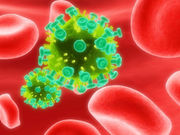Interns Less Satisfied With Flexible Residency Programs
Those in flexible programs more likely to report dissatisfaction with multiple aspects of training
Oxyntomodulin Augments Glucose Homeostasis
OXM effects seen in obese patients with and without T2DM; comparable effects to liraglutide in T2DM
Report Presents U.S. Trends in Abortion Methods, Care
Available facilities providing abortions down; many women live in county without abortion provider
Cardiovascular Health Declining in the United States
Decrease in disparities between race/ethnicity due to worsening CV health among whites 1988-2014
HIV Incidence Down in All Except Men Who Have Sex With Men
Decrease in modeled HIV incidence in all transmission risk groups except minority MSM
Adjuvant Long-Acting Muscarinic Antagonist Improves Asthma
Versus adjuvant placebo, LAMA or LABA plus inhaled corticosteroids lowers risk of asthma exacerbations
Blueprint Being Developed to Address Physician Burnout
As part of blueprint, task force developing strategies that can be adopted by any institution/practice
Cryoablation of Posterior Vagal Trunk Feasible in Obesity
Technical success rate 100 percent in 10 subjects; no procedure-related complications, adverse events
Nightmares Common in Military Personnel With Sleep Disturbance
Comorbid disorders of depression, anxiety, PTSD, and insomnia all associated with nightmares
Most Schools Have Variety of Food Allergy Policies
96.7, 61.8 percent of school nurses report anaphylaxis training for staff, classroom guidelines














